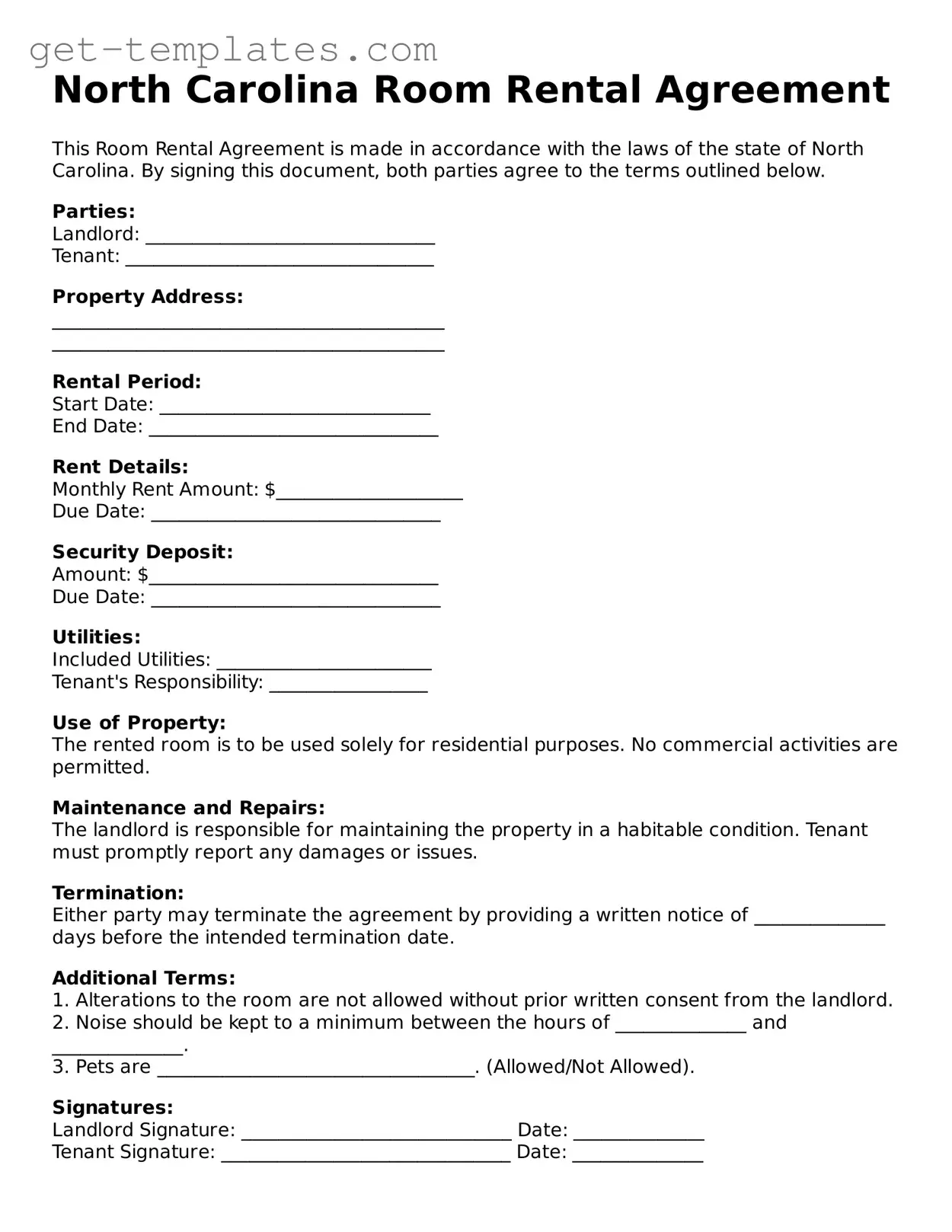North Carolina Room Rental Agreement
This Room Rental Agreement is made in accordance with the laws of the state of North Carolina. By signing this document, both parties agree to the terms outlined below.
Parties:
Landlord: _______________________________
Tenant: _________________________________
Property Address:
__________________________________________
__________________________________________
Rental Period:
Start Date: _____________________________
End Date: _______________________________
Rent Details:
Monthly Rent Amount: $____________________
Due Date: _______________________________
Security Deposit:
Amount: $_______________________________
Due Date: _______________________________
Utilities:
Included Utilities: _______________________
Tenant's Responsibility: _________________
Use of Property:
The rented room is to be used solely for residential purposes. No commercial activities are permitted.
Maintenance and Repairs:
The landlord is responsible for maintaining the property in a habitable condition. Tenant must promptly report any damages or issues.
Termination:
Either party may terminate the agreement by providing a written notice of ______________ days before the intended termination date.
Additional Terms:
1. Alterations to the room are not allowed without prior written consent from the landlord.
2. Noise should be kept to a minimum between the hours of ______________ and ______________.
3. Pets are __________________________________. (Allowed/Not Allowed).
Signatures:
Landlord Signature: _____________________________ Date: ______________
Tenant Signature: _______________________________ Date: ______________
